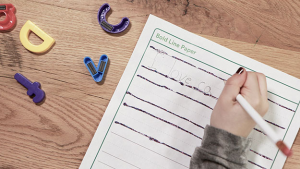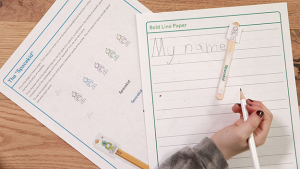Handwriting is more than just putting pen to paper. It involves fine motor and visual motor skills. While some children struggle with handwriting, it doesn’t have to be a challenge. Here are some multisensory techniques that can help your child improve their handwriting.
Use dark-ruled and “bumpy” paper.
Use paper with wide and bold lines to help your child stay in line when writing. You can also put glue into the paper lines, this will act as line barrier when it dries. This will make the child’s pencil “bump” as they write, and know when they are going over the line.

Trace and do mazes.
Tracing shapes and maze-like paths will help your child develop fine motor skills. This can also help her learn how to orient her movements from different directions. Mazes also help them practice staying in line.
Try the “Wet-Dry-Try” technique.
In the “Wet-Dry-Try” technique, the child will trace the letter with a wet sponge on a chalkboard, dry it out then try forming the letter on their own. This is both a fun activity and a technique that allows the child to practice writing.

Use a “Spacekid”
Some children struggle with their spaces when writing. A “spacekid” is a decorated cartoon stick that represents spaces when teaching writing to your child. Have them put a “spacekid” at the end of every sentence to help them practice their spaces.

Try sensory freezer-bag writing.
A freezer bag or Ziplock filled with hair gel is also a great sensory technique for practicing handwriting with children. Put clear or colored hair gel into the freezer bag, you can decorate it the way you want. Make sure that it is sealed, flatten it into a surface, and have your child practice forming letters on it. The resistance from the gel will help the child learn how each letter is formed.
Reference:
Morin, Amanda. “6 Multisensory Techniques for Teaching Handwriting.” Reading Rockets, https://www.readingrockets.org/article/6-multisensory-techniques-teaching-handwriting. Accessed 20 January 2023.

Comments are closed